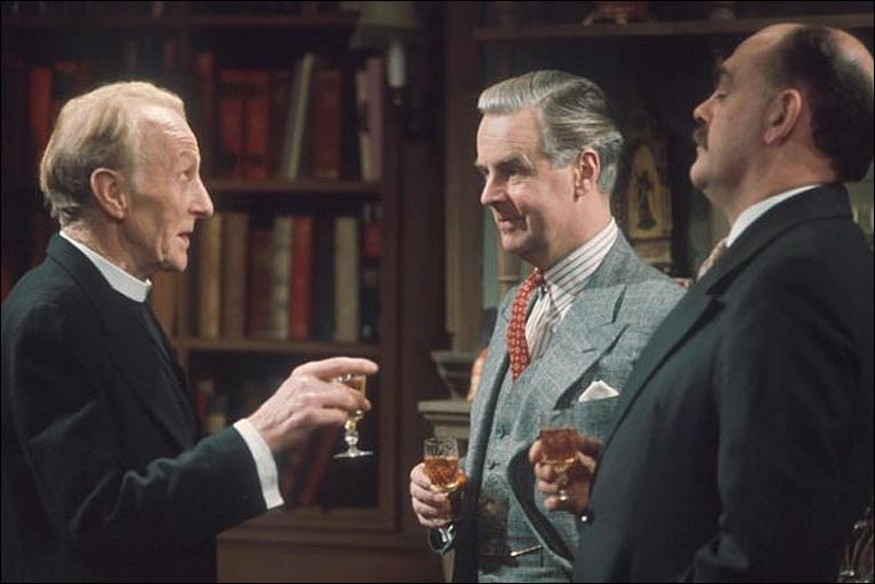
Ian Carmichael (centre) as Lord Peter Wimsey in the 1970s TV series.
 Classic crime novels have been a source of rich pickings for TV writers and producers since the days of good old black and white. They can provide a solid foundation for a beloved, long-running and essentially faithful set of programmes (think Poirot), or a stepping stone for the screen writer’s imagination to take flight and create something that bears scant resemblance to the beloved original but is a winner in its own right (Sherlock and Elementary are good examples here).
Classic crime novels have been a source of rich pickings for TV writers and producers since the days of good old black and white. They can provide a solid foundation for a beloved, long-running and essentially faithful set of programmes (think Poirot), or a stepping stone for the screen writer’s imagination to take flight and create something that bears scant resemblance to the beloved original but is a winner in its own right (Sherlock and Elementary are good examples here).
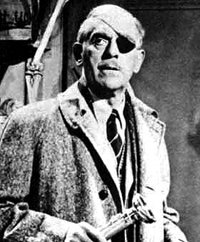
Boris Karloff in Colonel March of Scotland Yard.
It’s certainly a tried and tested formula – some of the first dramas broadcast in the 1930s by the BBC were adaptations of detective stories by such popular authors as Edgar Wallace and Agatha Christie, and one of ITV’s earliest successes was Colonel March of Scotland Yard, shown in 1956-7 and starring Boris Karloff in the title role. The dramas were based upon the Department of Queer Complaints stories by John Dickson Carr.
The television schedules are full of police dramas these days, with the classics still making quite a showing. So, to steal a line from a completely different medium and genre, here’s my pick of the good, the bad and the ugly…
Sherlock/Elementary/Sherlock Holmes
The most durable of all TV sleuths is the inimitable Sherlock Holmes and his faithful sidekick Dr Watson, created by Sir Arthur Conan Doyle. He has been seen in a number of small screen incarnations – and the first to take on the role on the BBC was Alan Wheatley in 1951, followed by Douglas Wilmer in 1965, with Nigel Stock taking the part of Watson. Stock was back again as the long-suffering Watson in 1968, this time with Peter Cushing as Holmes, all on the BBC.
For many though, the definitive TV incarnation remains Jeremy Brett who took on the role of the great man on ITV from 1984-94, with David Burke, and later, Edward Hardwicke, as Watson. Jump forward to more recent times and the character has undergone a 21st century makeover in the BBC’s Sherlock, with only the odd ironic appearance of a deerstalker. It’s an interesting premise and one that works pretty well in these hi-tech days of ours. Benedict Cumberbatch’s take on our hero matches a killer coat (made by Belstaff, and costing £1350 dontcha know) and a tendency to ‘high-functioning sociopathy’ with a smartly written script and some award winning performances by Cumberbatch and Martin Freeman as Watson. Cue special effects and you have a Holmes for today’s viewers… As is Jonny Lee Miller’s version of the sleuth in another modern spin from the US entitled Elemenatary. Here’s Watson becomes female (played by Lucy Liu) and Holmes leaves the UK to go into rehab in the USA. Cleverly done – and whatever the purists may say, I think both sit extremely well in the Sherlock Holmes canon.
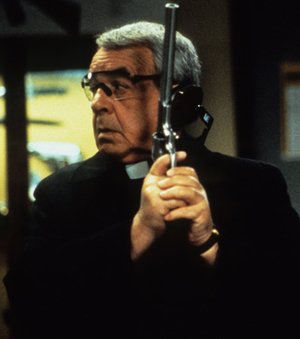
Tom Bosley’s Father Dowling was based on GK Chesterton’s Father Brown.
Father Brown
A short and stumpy Catholic priest may sound like an unlikely sleuth, but GK Chesterton’s creation featured in five collections of short stories and has appeared in many big screen interpretations since he first appeared in 1910. He’s found an international following through television though, with adaptations in German and Italian as well as on British and US TV – in fact, the Father Dowling Mysteries, starring Tom Bosley, were based on our good old English cleric.
On home soil, the priest was played by Kenneth More in a 13-part series based on the short stories and shown in the mid 1970s. More recently, the role has been taken by Mark Williams, with the action moved to the Cotswolds in the 1950s. This daytime drama has had three series up to press.
Lord Peter Wimsey
Some detectives were just made for TV, and some actors were just made to play them. Cue Ian Carmichael, who made the aristocratic, quintessentially British, gentleman detective his own. Created by Dorothy L Sayers, Wimsey featured in a number of novels and short stories. The era (1920s to 1930s) and the fact that Wimsey is a lover of fast cars make the stories particularly photogenic. The imperious peer first made a telly appearance in 1947 in a TV version of Busman’s Honeymoon – and the same novel featured again 10 years later. But it was the television series, featuring Carmichael, which ran between 1972 and 1975 that really put the character in the public eye and found him a load of new fans, and readers. Whimsy returned again in 1987 with Edward Petherbridge in the title role and Harriet Walter playing his love interest Harriet Vane. Perhaps the time is ripe for a Wimsey return?
Miss Marple
Who knew a nosy old busybody could become one of television’s best-loved amateur detectives? Jane Marple has been played by a veritable Who’s Who of fine actresses, on both the big and small screens and whenever a new one is cast, her identity is sure to make newspaper headlines. I was amazed to learn that chirpy Lancashire songstress Gracie Fields took the role for the Agatha Christie creation’s first-ever telly outing. It was in 1956, on US television, in a one-off drama based on the novel A Murder is Announced!
The better known incarnations are all from British productions – and the jury is still out on who did it best… but when you have Joan Hickson, Geraldine McEwan and Julia McKenzie on the list, it’s impossible to pick just one of them. Suffice to say that they’ve all done old Agatha proud.
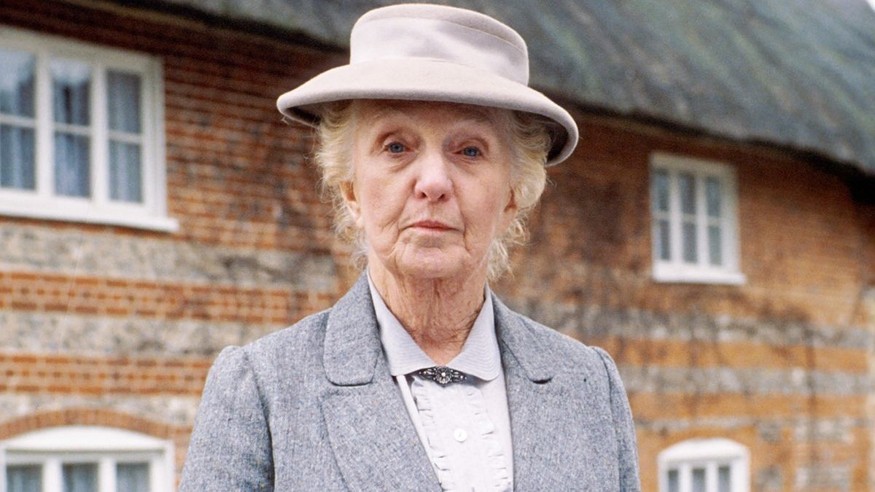
Is Joan Hickson the face of Miss Marple?
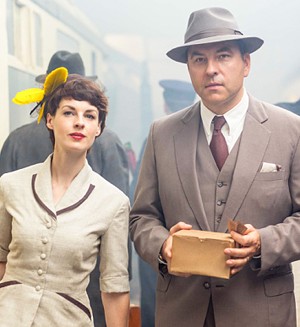 Which is more than can be said for Partners in Crime, the latest TV version of Christie’s Tommy and Tuppence stories. Apologies for leaving the worst till last, but what were they thinking about when someone cast David Walliams in the latest incarnation of this lesser-known double act? This married couple appeared in four full-length novels and a collection of short stories between 1922 and 1973 (the latter, Postern of Fate, was the last novel Christie ever wrote). They made their television debut in the 1980s, with Francesca Annis and James Warwick in the roles, and have appeared occasionally since. For some reason T&T appear destined to be tweaked to within an inch of their lives. A series of French films renamed them, moved the setting and bastardised the stories, while a 2006 episode of Marple had the title character working with Tuppence while Tommy was away on business – and was based on a T&T story in which Jane Marple plays no part! Hmmm.
Which is more than can be said for Partners in Crime, the latest TV version of Christie’s Tommy and Tuppence stories. Apologies for leaving the worst till last, but what were they thinking about when someone cast David Walliams in the latest incarnation of this lesser-known double act? This married couple appeared in four full-length novels and a collection of short stories between 1922 and 1973 (the latter, Postern of Fate, was the last novel Christie ever wrote). They made their television debut in the 1980s, with Francesca Annis and James Warwick in the roles, and have appeared occasionally since. For some reason T&T appear destined to be tweaked to within an inch of their lives. A series of French films renamed them, moved the setting and bastardised the stories, while a 2006 episode of Marple had the title character working with Tuppence while Tommy was away on business – and was based on a T&T story in which Jane Marple plays no part! Hmmm.
Have you checked out our 20 greatest crime shows of all time?








